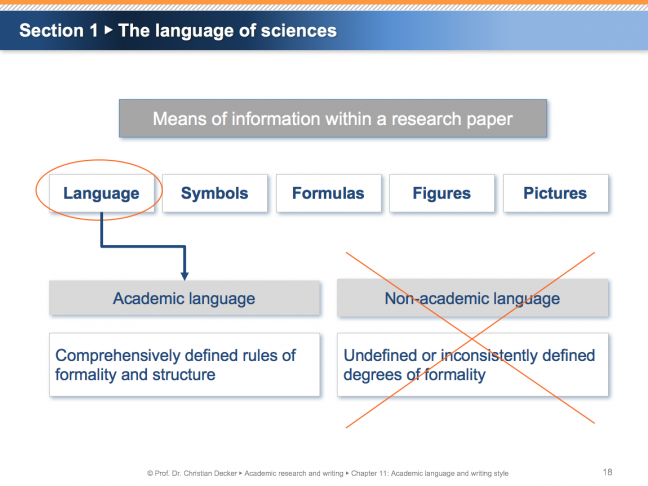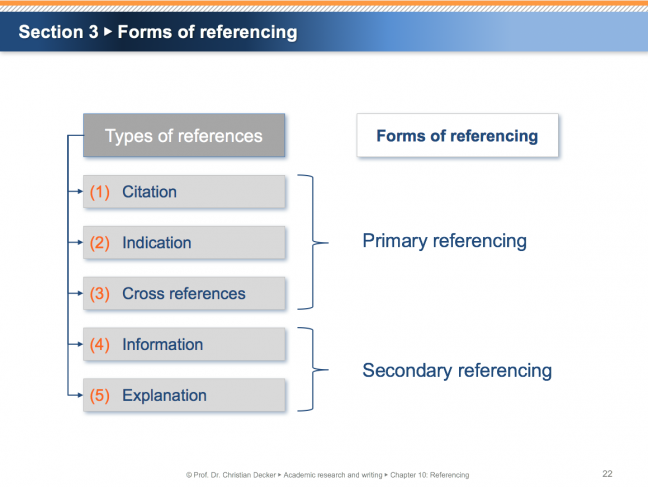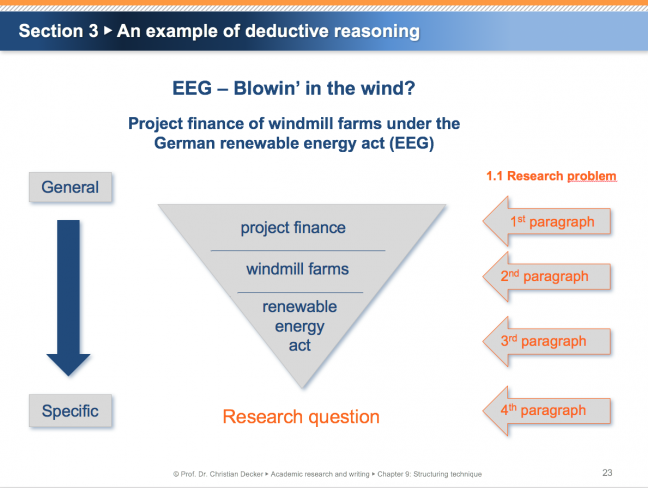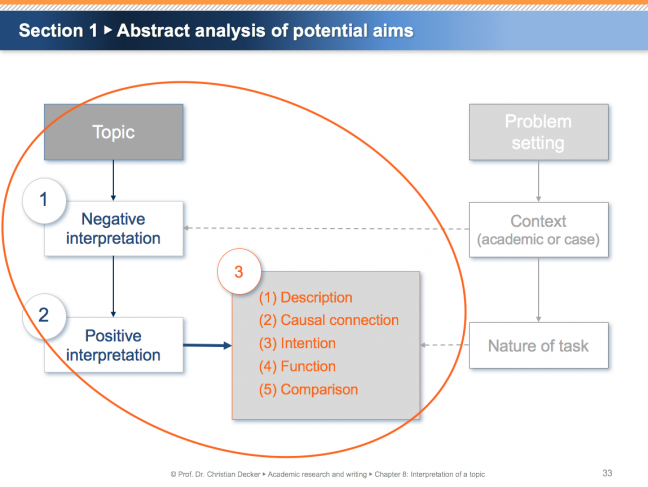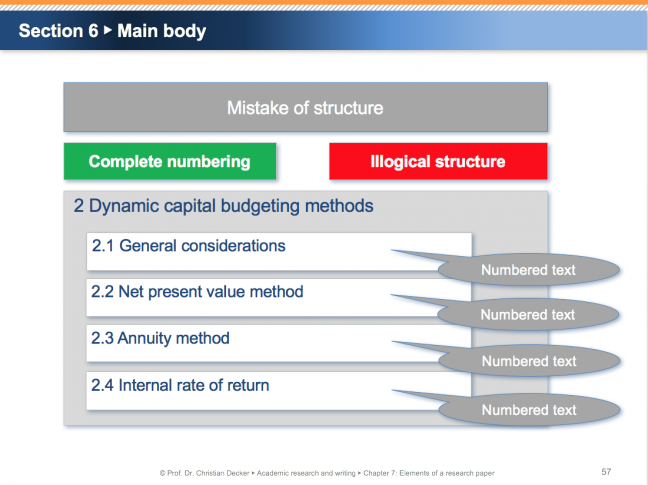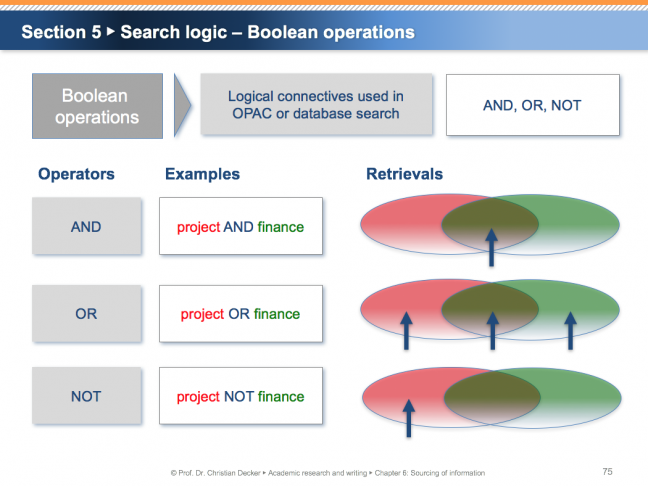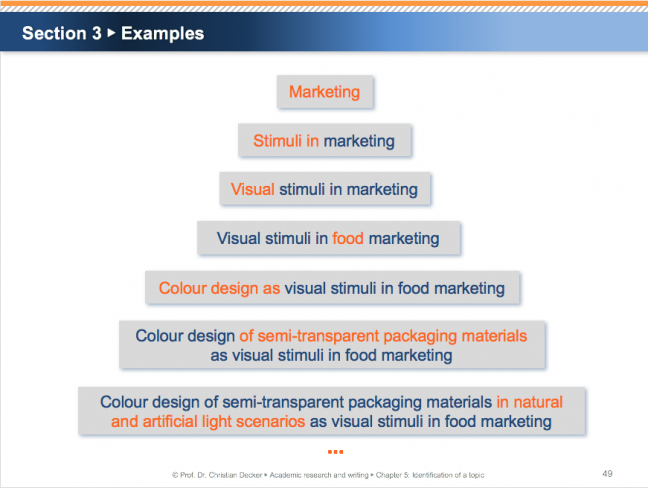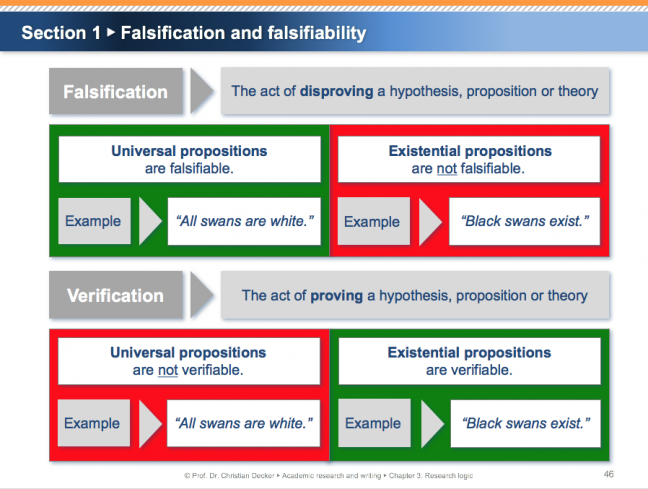Rigour and flow of argumentation have a major impact on the quality of academic research. An essential component of argumentation is providing definitions. Definitions can be derived with the help of standard, advanced or professional approaches. Furthermore, the deduction of individual arguments is documented in paragraphs and chapters, which serve as the units of an academic paper. The logic of arguments has to be mirrored in the paragraph structure, which consists of three logical text elements: topic sentence, supporting sentences and concluding sentence. Transitioning between sentences as well as between paragraphs supports the flow of argumentation and provides cohesion within the text. During the development of an argumentation, the structuring of paragraphs and chapters shows an iterative character. Referencing that supports the argumentation can enhance the academic quality of the research output. Thus, arguments of other sources should be carefully combined instead of randomly compiled.
Link to e-learning videos: Overview of chapter 12

